#History Notes
Text
I need a dpxdc Crossover scenario where, somehow, Danny Fenton and Billy Batson end up at the same school. Maybe Danny is a year older but he got held back in a subject, so they’re both in the same bio class. Danny as a Sophomore and Billy as a Freshman. They’re lab partners and they hang out during school, and neither of them have any clue the other is a superhero. Danny is so used to everyone having Kinda Weird vibes from Amity that Billy doesn't ping anything and Billy has the same thing where everyone is Fawcett is a little Off, nothing particularly different about this guy.
Later on, both of them have joined the league as Shazam and Phantom and they still have literally no clue the other is a superhero. Billy doesn't recognize Danny as Phantom because of the altered features and Extremely Weird Vibes and obviously Danny doesn't think to compare the adult man Shazam with his fourteen-year-old buddy Billy. They both think the other is a semi-immortal being and they are both desperately making shit up about past events and praying they got it right. They both are continuously amazed that they're so good at guessing historical facts. They keep having to agree to random historical events that may or may not have happened because the other guy said so. They are both passing World History with flying colors because of the research they have to do to keep the "ruse" up
Eventually, someone's identity gets revealed (I'm thinking Billy) to the League, which is really dramatic and emotional about how Billy lied to everyone about his age and history for so long. And then Danny arrives ten minutes late with a Starbucks like "hey why is everyone freaking out. Why is Superman crying. WHY is B-this random kid here. On the Watchtower. What."
Someone: Phantom, I know you and Shazam were close, did you know he was secretly the fourteen-year-old Billy Batson? He's been lying to us about his past this whole time!
Billy: D:
Phantom: :/ UH so while we're on the subject *transforms from Phantom to Danny* hey Billy!
Billy: DANNY?
Anyways its a whole confusing mess and everyone is yelling and nobody knows what the fuck is going on but eventually its cleared up that yes, both Phantom and Shazam are secretly kids, they apparently know each other but only in their secret IDs, and they have in fact been bullshitting Ancient History facts like there's no tomorrow
But the important part here is that Billy and Danny pass their lab final, because thats what really matters
#mads posts#dp x dc#danny phantom#dc#billy batson#the high school is in Fawcett not Amity#I want to add Wonder Woman and any other immortals of the team are definitely. so confused about Shazam and Phantom comparing Ancient#History notes#but like. obviously they seem to be in agreement#so maybe they (the other immortals) are in the wrong?#The Gang Accidentally Gaslights The Justice League#From The Drafts
4K notes
·
View notes
Text

Maybe I should make a "handsome samurai of the week" column? 🤔
Here we have Obata Tokujiro, on the left, and Matsuyama Toan, on the right, photographed in the late Edo period.
Obata Tokujiro was a teacher of both English and science at Kaiseijo, a school of Western learning in Edo, which was one of the forerunners of what is now Tokyo University. During the Meiji period he traveled both Europe and the United States before returning to Japan, and he later became head of Keio University.
Matsuyama Toan was a doctor, head of Keio University School of Medicine, founder of Tokyo Jikei University School of Medicine, and translator of the first English-language medical book published in Japan, among other things.
#history notes#historical notes#history reference#historical reference#history research#historical research#photos#portraits#samurai#Edo period#late Edo period#Bakumatsu period#handsome samurai
120 notes
·
View notes
Text
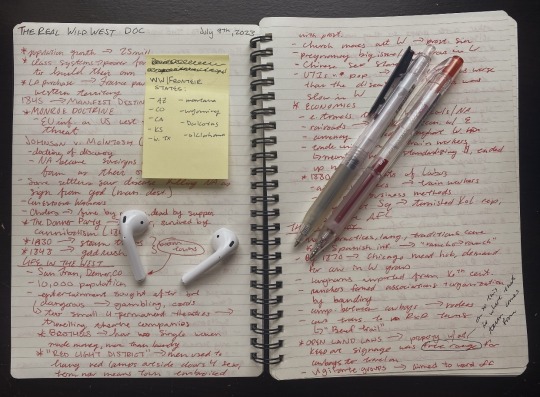
July 9th, 2023
Felt a desire to do some more research on American Frontier Life & the mythos of the Wild, Wild, West. I watched a short documentary and took a few pages of notes during a brief study session.
#studyspo#academia#studyblr#academia aesthetic#study motivation#dark academia#dark acadamia aesthetic#light acadamia aesthetic#study aesthetic#summer studyspo#studying#aesthetic notes#study notes#history notes#us history#historyblr#🕯️
95 notes
·
View notes
Text
Here guys, have my WWll notes from Social Studies (History) :>

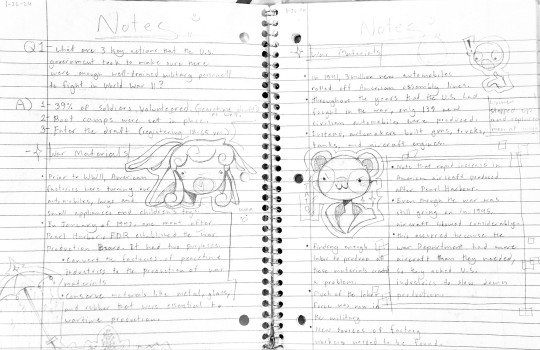


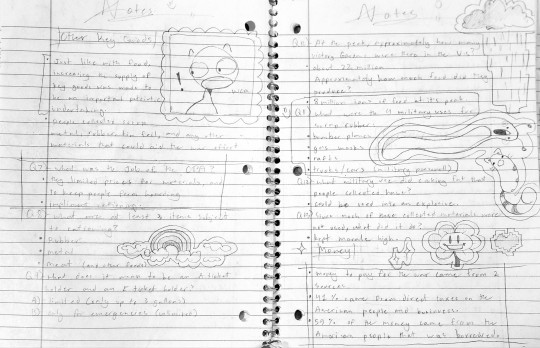



I'll rebloog this and add the Cold War notes I took ((o(^∇^)o))
#social studies#history notes#stuff#educational#traditional art#doodles#school doodles#these were graded too#i highly doubt the doodles got me extra credit#but it was fun
13 notes
·
View notes
Photo

#studyblr#notes#history#history notes#historyblr#world history#world history notes#western civ#western civ notes#western civilization#western civilization notes#western civ 1#western civilization 1#western civ 1 notes#western civilization 1 notes#anthropology#anthropology notes
67 notes
·
View notes
Text

<new hair, new tee, newjeans do you see?>
#hungarian langblr#hungarian language#gradblr#study#uniblr#history studyblr#history notes#new studyblr#studyblr#studyblr community#kpop studyblr#student life#studyspiration#studystudystudy#studyinspo#study notes#good grades#study aesthetic#study blog#study hard#study inspiration#study motivation#study space#study tips#study with me#studygram#studying#studyspo#studytube#studywithme
7 notes
·
View notes
Text
It's been a while
I haven't been online for a semester practically if not more and literally, school is to blame. Junior year is hard haha but I think i'm getting the hang of it?? Questionable...but I'm getting there lol
Here are some history notes I took last week for finals. They turned out pretty good for minimum effort and a lot of time ;)
. ⋅ ˚̣- : ✧ : – ⭒ ☕ ⭒ – : ✧ : -˚̣⋅ .

#study aesthetic#study notes#studygram#studyspo#history#history notes#colorful#dark academic aesthetic#starbucks#coffee#tech gadgets 2022#december#notability#applelaptop
20 notes
·
View notes
Text
History notes: The Bastard Arms, Clipstone Street
Another pub stood to the right of where the Tower Tavern is. Photo: Linus Rees.
The Tower Tavern on the corner of Clipstone Street and Cleveland Street stands next to the site of another public house that, according to some sources, had an unusual name.
“This was originally called the Bastard Arms in 1826 in honour of Henry Fitzroy (1663-1690), the bastard son of Charles II,” wrote Mike…

View On WordPress
#Clipstone Street#ddd#history#history notes#public houses#pubs#Survey of London#Tower Tavern#University of Westminster
0 notes
Text
American Revolution (Causes) pt. 1
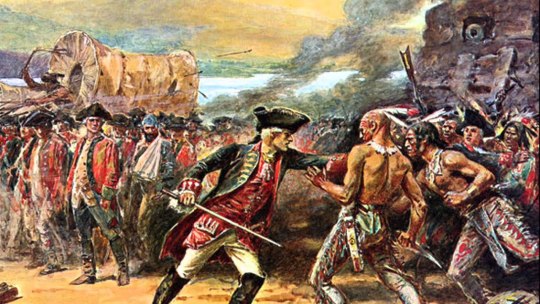
What was the French Indian War?
The French Indian War or the Seven Years War was fought predominantly by the autocratic French empire versus the self governing British government for the control of North America (and India).
What was the role of the French Indian War in the American Revolution?
There were several results of the French Indian War which added to the discontent between the American colonists and the British government such as:
With the end of the war, Canada and Florida were under English control, this meant the main land colonies were no longer in danger from an attack by either the French or the Spanish, and therefore the American colonists felt there was no need for military protection. (See Quartering Act in next note)
The English and American Colonists never before had come into close contact with each other until the war, this resulted in a mutual dislike which clouded their relationship both during and after the war:
The English were furious as the colonial assemblies refused to vote personnel and supplies the governors needed until they gave into their political demands, and even when financial aid was voted by the colonies it was ungenerous.
The Americans on the other hand were irked by the arrogance of the English military officers who treated the colonial political and military leaders as inferior to them
-> forcibly enlist Americans in the English army and naval.
-> The British leaders were also ignorant of the military fighting techniques such as fighting "Indian Style" necessary for military success in North America, which added to the colonial reluctance to serve English military leaders.
The American colonists, proved themselves to be disloyal to Britain as during the war, the colonists continued to trade with the French.
To prevent smuggling during the war, the British government implemented the writs of assistance. (The writs of assistance was a court order in which sheriffs, constables and other peace officers were authorized to aid custom officials in their search for smuggled goods.) Unlike the ordinary procedure with search warrants, there was no limit placed on the writs of assistance.
James Otis, an attorney, famously argued against the legality of the Writs of Assistance in court and claimed the writs of assistance led to searches which were a violation of their natural equity. Although he lost the case, his arguments against these writs helped to inspire colonial opposition to British policies. Eventually, the public opinion influenced the British government to put an end to the writs of assistance. (Note Enlightenment Ideas influence)
During the war, laws against colonial manufacturing were not enforced, with the demand of the English army for supplies, the Americans took advantage of the rich manufacturing resources of the colonies.
-> At the end of the war, America had more furnaces and forges than England, they started to thrive in shipbuilding industry and agriculture, fishermen took control of the Grand Banks from Britain while there was a demand for the American farmers wheat, corn, beef, pork, cattle, horses, tobacco, rice, indigo.
The American colonies had attained an unprecedented level of political and economic development.
1 note
·
View note
Text
its so crazy that for the last 5 years a small but annoyingly vocal online group has been acting like mob movies of all things are pretentious and inaccessible cinema. yeah the godfather is kinda slow but these are movies about criminals who shoot people
#that family guy bit is right it does insist upon itself but it has a valid point to insist etc etc#crow.txt#side note if you do wanna watch a good mob flick and the godfather was a bit too slow for you please watch goodfellas#its one of my favorite films of all time i love it so much#while i do like the godfather and i recognize how important it was for film history i like goodfellas a bit more
3K notes
·
View notes
Text


LEATHER EXCERPTS FROM QUEER PUBLICATION “MY COMRADE,” PUBLISHED BY LEGENDARY DRAG QUEEN LINDA THOMPSON.
7K notes
·
View notes
Text
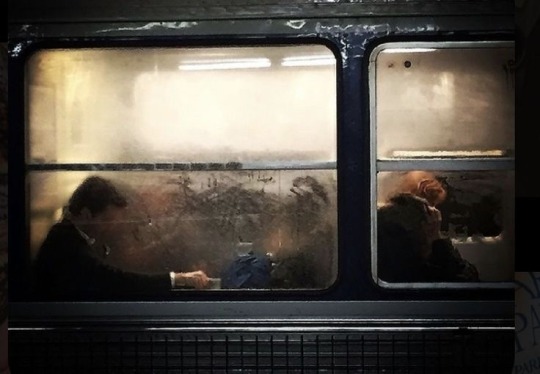
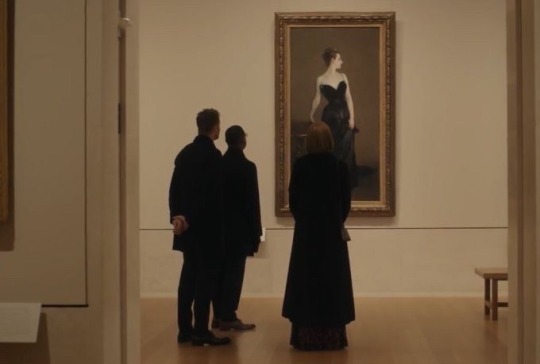






#70s#aesthetic#it girl#lana del ray aesthetic#nostalgia#notes#ootd#outfit#pink#poetry#dark acedemia#dark academia#dark academic aesthetic#the secret history#donna tartt#bunny corcoran#henry winter#camilla macaulay#charles macaulay#richard papen#francis abernathy#julian morrow#Greek#latin#the classics#bibliophile#books and literature#polyglot#wealth#old money
7K notes
·
View notes
Text

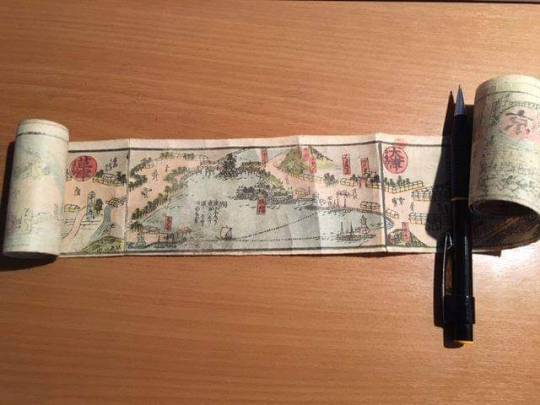

In the Edo period, travellers along the Tokaido and other major routes would carry woodblock print scroll maps like these pictured, mentioning places and points of interest along the route.
The scrolls would also contain information for travellers of the costs incurred at various checkpoints.
The scroll would be unwound as they crossed the various sections, and rolled up in the opposite direction for the return journey.
I ncidentally, during the Edo period, along the Tokaido, signboards en route to Edo would be shown in kanji, while signs in the opposite direction, to Kyoto, were displayed in hiragana. This was so that people traveling the Tokaido, upon waking, would not head the wrong way in an early morning confusion.
Shared from here.
#shared#history notes#historical notes#historical reference#history reference#history research#historical research#Edo period#map#map scroll#Tokaido#travel#traveling
28 notes
·
View notes
Text
More on pre-electricity lighting.
Interesting to see this one pop up again after nearly two years - courtesy of @dduane, too! :->
*****
After experiencing a couple more storm-related power cuts since my original post, as well as a couple of after-dark garden BBQs, I've come to the conclusion that C.J. Cherryh puts far too much emphasis on "how dark things were pre-electric light".
For one thing eyes adjust, dilating in dim light to gather whatever illumination is available. Okay, if there's none, there's none - but if there's some, human eyes can make use of it, some better or just faster than others. They're the ones with "good night vision".
Think, for instance, of how little you can see of your unlit bedroom just after you've turned off the lights, and how much more of it you can see if you wake up a couple of hours later.
There's also that business of feeling your way around, risking breaking your neck etc. People get used to their surroundings and, after a while, can feel their way around a familiar location even in total darkness with a fair amount of confidence.
Problems arise when Things Aren't Where They Should Be (or when New Things Arrive) and is when most trips, stumbles, hacked shins and stubbed toes happen, but usually - Lego bricks and upturned UK plugs aside - non-light domestic navigation is incident-free.
*****
Here are a couple of pics from one of those BBQs: one candle and a firepit early on, then the candle, firepit and an oil lamp much later, all much more obvious than DD's iPad screen.

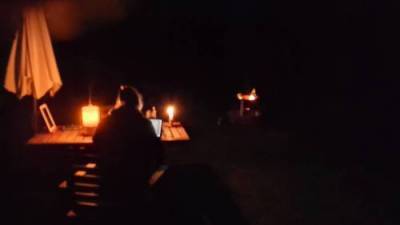
Though I remain surprised at how well my phonecam was handling this low light, my own unassisted eyes were doing far better. For instance, that area between the table and the firepit wasn't such an impenetrable pool of darkness as it appears in the photo.
I see (hah!) no reason why those same Accustomed Eyes would have any more difficulty with candles or oil lamps as interior lighting, even without the mirrors or reflectors in my previous post.
With those, and with white interior walls, things would be even brighter. There's a reason why so many reconstructed period buildings in Folk Museums etc. are (authentically) whitewashed not just outside but inside as well. It was cheap, had disinfectant qualities, and was a reflective surface. Win, win and win.
*****
All right, there were no switches to turn on a light. But there was no need for what C.J. describes as stumbling about to reach the fire, because there were tinderboxes and, for many centuries before them, flint and steel. Since "firesteels" have been heraldic charges since the 1100s, the actual tool must have been in use for even longer.
Tinderboxes were fire-starter sets with flint, steel and "tinder" all packed into (surprise!) a box. The tinder was easily lit ignition material, often "charcloth", fabric baked in an airtight jar or tin which would now start to glow just from a spark.
They're mentioned in both "The Hobbit" and "The Lord of the Rings". Oddly enough, "Hobbit" mentions matches in a couple of places, but I suspect that's a carry-over from when it was just a children's story, not part of the main Legendarium.
Tinderboxes could be simple, just a basic flint-and-steel kit with some tinder for the sparks to fall on...

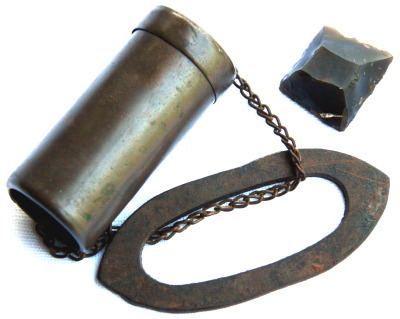
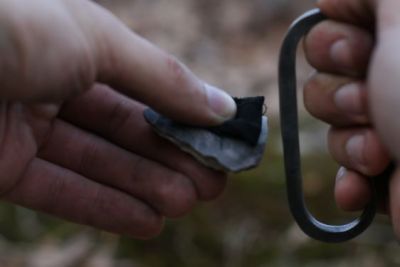
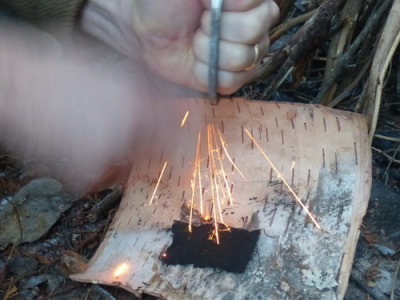
...or elaborate like this one, with a fancy striker, charcloth, kindling material and even wooden "spills" (long splinters) to transfer flame to a candle or the kindling...

This tinderbox even doubles as a candlestick, complete with a snuffer which would have been inside along with everything else.

Here's a close-up of the striker box with its inner and outer lids open:
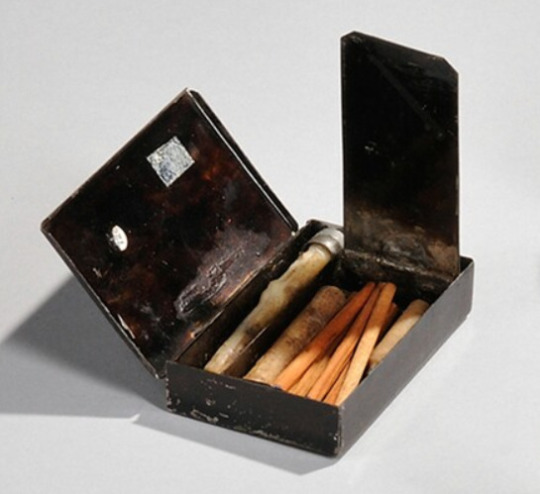
What looks like a short pencil with an eraser is actually the striker. A bit of tinder or charcloth would have been pulled through that small hole in the outer lid, which was then closed.
There was a rough steel surface on the lid, and the striker was scraped along it, like so:

This was done for a TV show or film, so the tinder was probably made more flammable with, possibly, lighter fuel. That would be thoroughly appropriate, since a Zippo or similar lighter works on exactly the same principle.
A real-life version of any tinderbox would usually just produce glowing embers needing blown on to make a flame, which is shown sometimes in movies - especially as a will-it-light-or-won't-it? tension build - but is usually a bit slow and non-visual for screen work.
*****
There were even flintlock tinderboxes which worked with the same mechanism as those on firearms. Here's a pocket version:
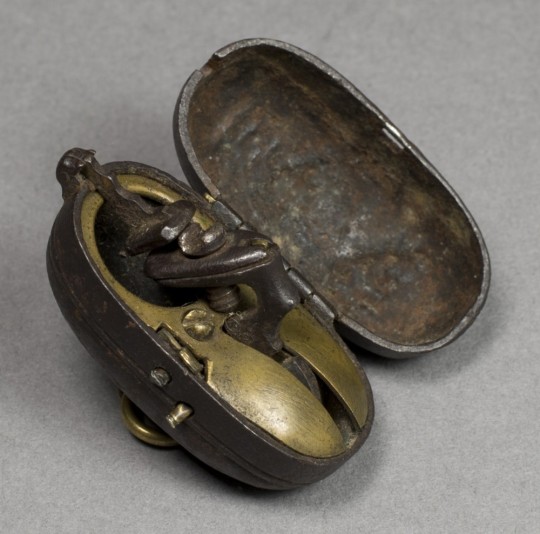
Here are a couple of bedside versions, once again complete with a candlestick:
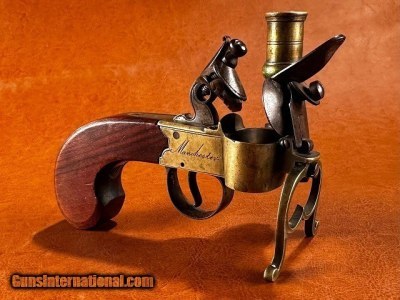
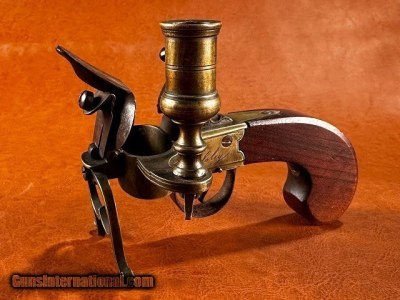
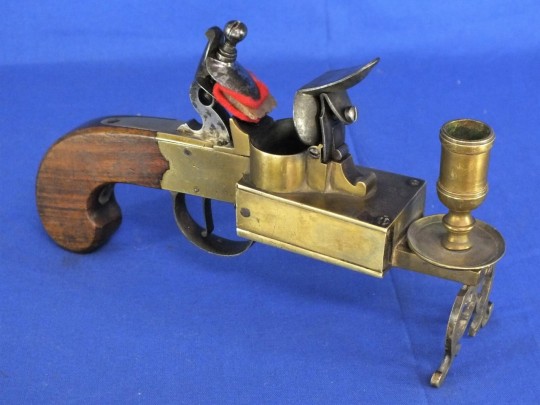
And here are three (for home defence?) with a spotlight candle lantern on one side and a double-trigger pistol on the other.


Pull one trigger to light the candle, pull the other trigger to fire the gun.
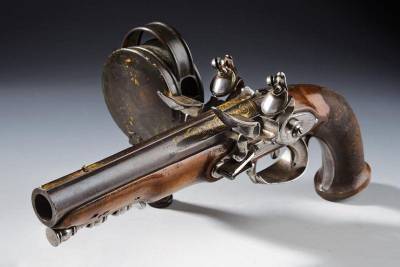

What could possibly go wrong? :-P
*****
Those pistol lanterns, magnified by lenses, weren't just to let their owner see what they were shooting at: they would also have dazzled whatever miscreant was sneaking around in the dark, irises dilated to make best use of available glimmer.
Swordsmen both good and bad knew this trick too, and various fight manuals taught how to manage a thumb-shuttered lamp encountered suddenly in a dark alley.
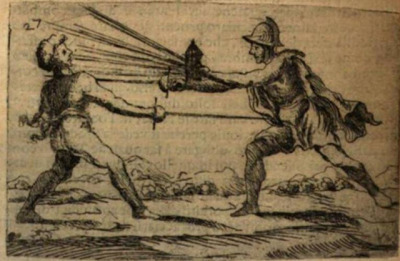
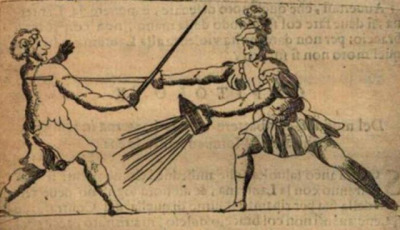
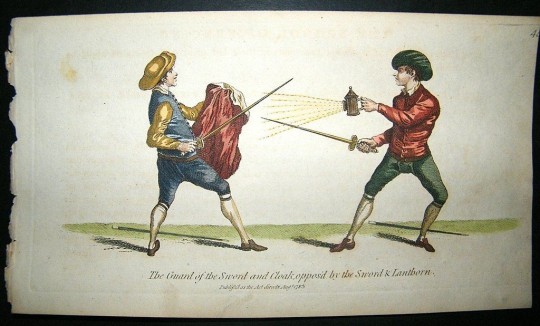
There's a sword-and-lantern combat in the 1973 "Three Musketeers" between Michael York (D'Artagnan) and Christopher Lee (Rochefort), which was a great idea.
Unfortunately it failed in execution because the "Hollywood Darkness" which let viewers see the action, wasn't dark enough to emphasise the hazards / advantages of snapping the lamps open and shut.
This TV screencap (can't get a better one, the DVD won't run in a computer drive) shows what I mean.
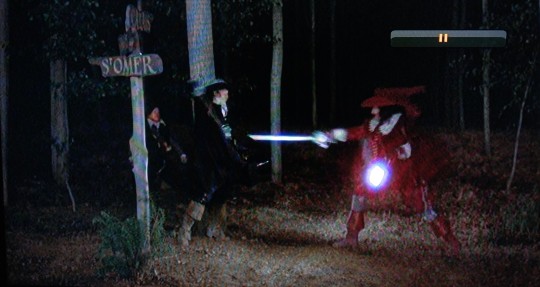
In fact, like the photos of the BBQ, this image - and entire fight - looks even brighter through "real eyes" than with the phonecam. Just as there can be too much dark in a night scene, there can also be too much light.
*****
One last thing I found when assembling pics for the post were Folding Candle-lanterns.
They were used from about the mid-1700s to the later 20th century (Swiss Army ca. 1978) as travel accessories and emergency equipment, and IMO - I've Made A Note - they'd fit right into a fantasy world whose tech level was able to make them.
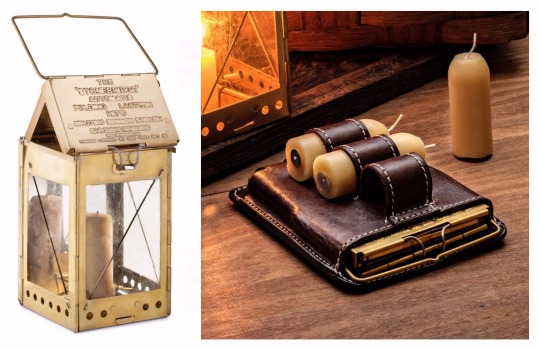
The first and last are reproductions: this one is real, from about 1830.
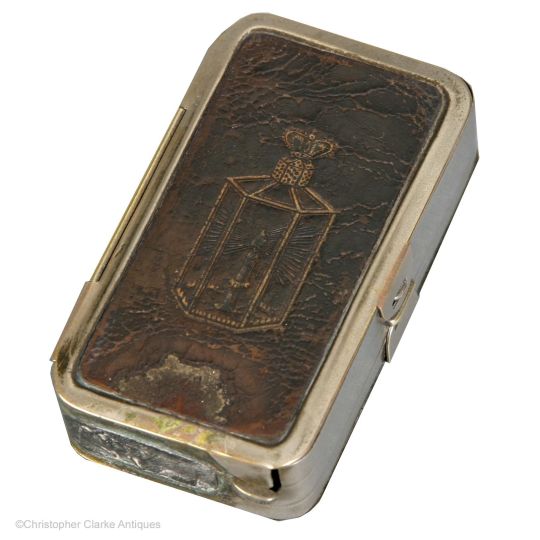
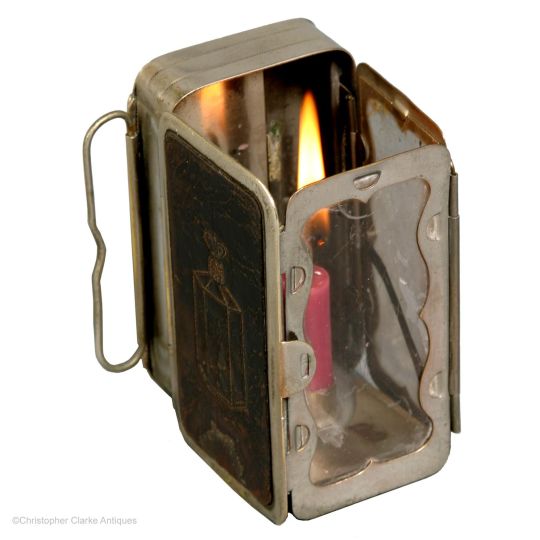
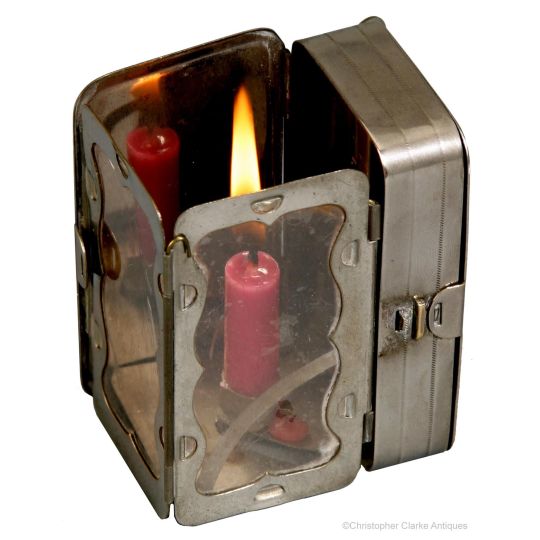
The clear part was mica - a transparent mineral which can be split into thin flexible sheets - while others use horn / parchment, though both of these are translucent rather than transparent. Regardless, all were far less likely to break than glass.
One or two inner surfaces were usually tin, giving the lantern its own built-in reflector, and tech-level-wise, tin as a shiny or decorative finish has been used since Roman times.
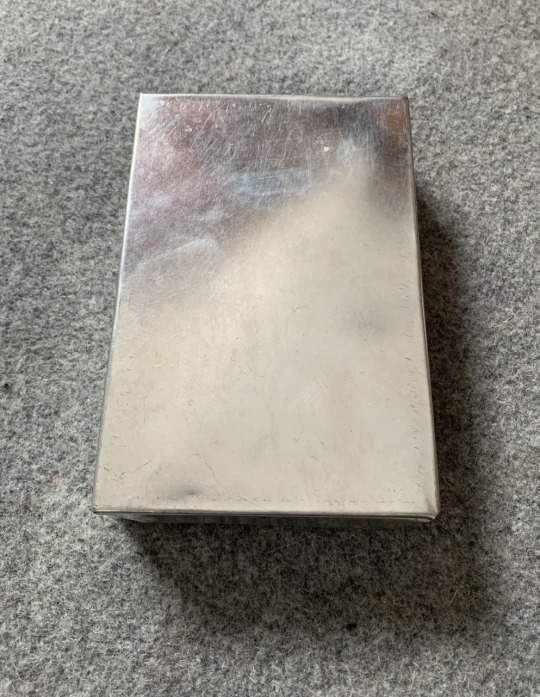


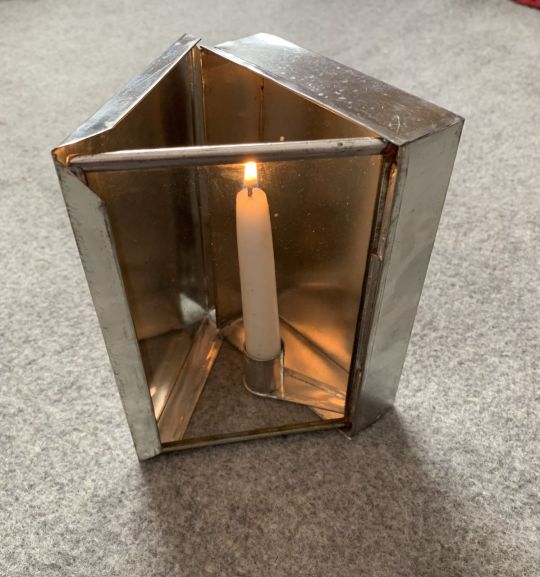
I'm pretty sure that top-of-the-line models could also have been finished with their own matching, maybe even built-in, tinderboxes.
And if real ones didn't, fictional ones certainly could. :->
*****
Yet more period lighting stuff here, including flintlock alarm clocks (!)
#period lighting#tinderbox#too light too dark#social history#writer notes#research#period tech#sword vs lantern#c. j. cherryh
1K notes
·
View notes
Text
got a message out of the blue about that 'why Batman doesn't kill' explanation I left on someone else's post like two years ago but it was just "wait is Alfred dead????" and I sort of forgot that most of tumblr Batfam fandom doesn't actually read comics and so largely has no idea that Bane killed Alfred back in 2019 and he's stayed dead since
#kinda tragic really because it's been excellent angst material for Damian Dick and Jason (and Bruce of course)#even if it's also led to some absolutely baffling writing decisions (tom taylor. I'm looking directly at you)#Alfred's now the second-longest lasting death in batfam history next to Jason lmao#alfred pennyworth#bruce wayne#batman#batfam#EDIT: IF I SNEAKILY CORRECTED MY DATES SO I ACTUALLY NOTED THE CORRECT YEAR CITY OF BANE WAS PUBLISHED IN (2019): no I didn't.
1K notes
·
View notes
Text
Achilles and Homeric Values
-- Homer’s work emphasized the protection of one’s pride and one’s family and property
-- Achilles was the fiercest warrior on the Greek side
-- he stopped fighting because his pride was wounded, as a king refused to give him his war prize
-- Homer wrote Odysseus as pure, Hector as good, but Achilles was the most human
-- Achilles’ lover Patroclus sees the Greeks are demoralized
-- Patroclus puts on Achilles’ armor and leads the Greeks
-- Patroclus dies at Hector’s hand
-- this enraged Achilles
-- his lover killed
-- Trojans thought they could kill him
-- his honor and family assaulted
-- Achilles fights again
-- he calls out Hector
-- Hector dies
-- Achilles desecrates his body
#history#historyblr#history notes#world history#world history notes#western civ#western civ notes#western civilization#western civilization notes#western civ 1#western civilization 1#western civ 1 notes#western civilization 1 notes#studyblr#achilles#patroclus#hector#prince hector#homeric values#homer#iliad#the iliad
18 notes
·
View notes